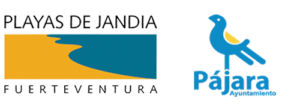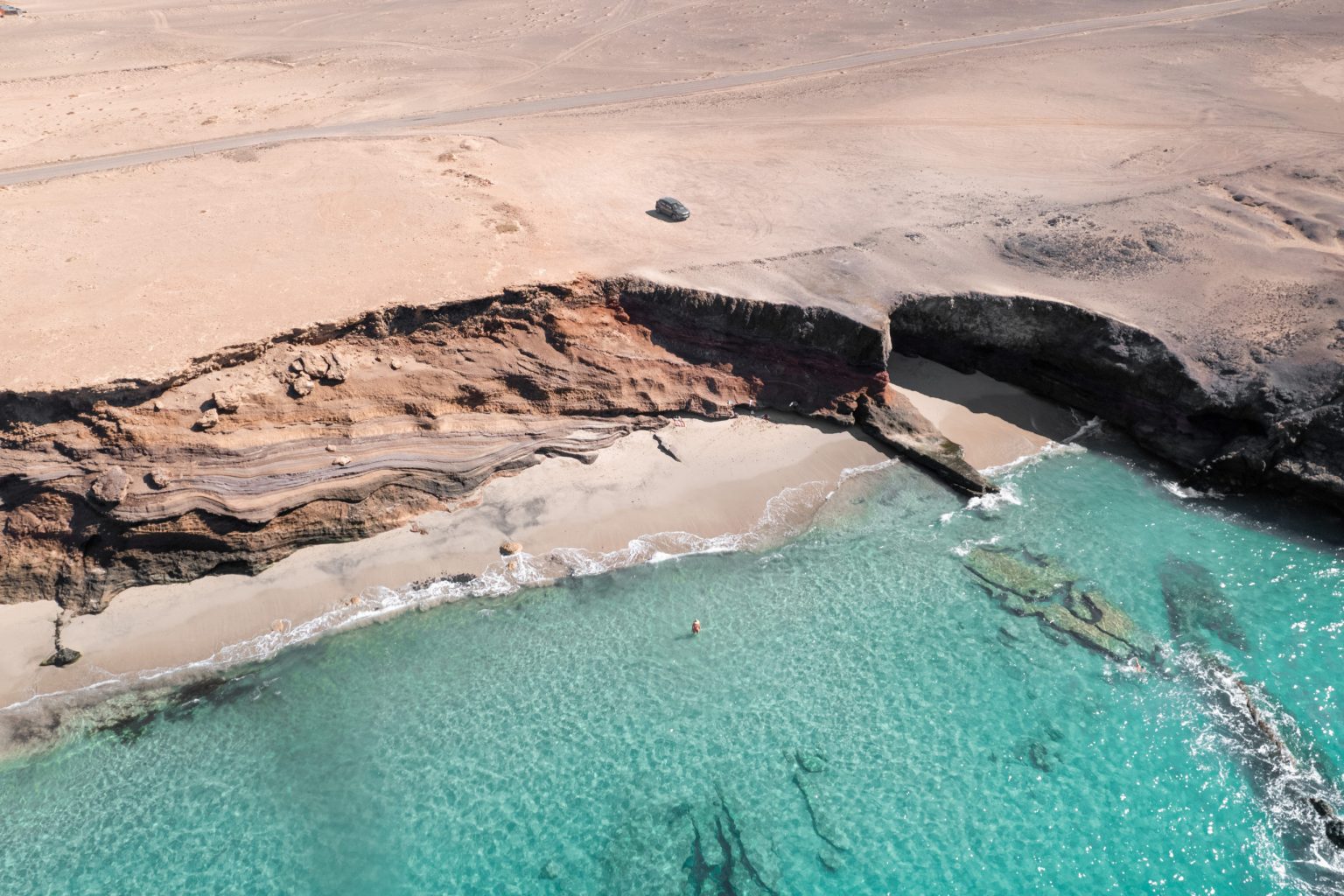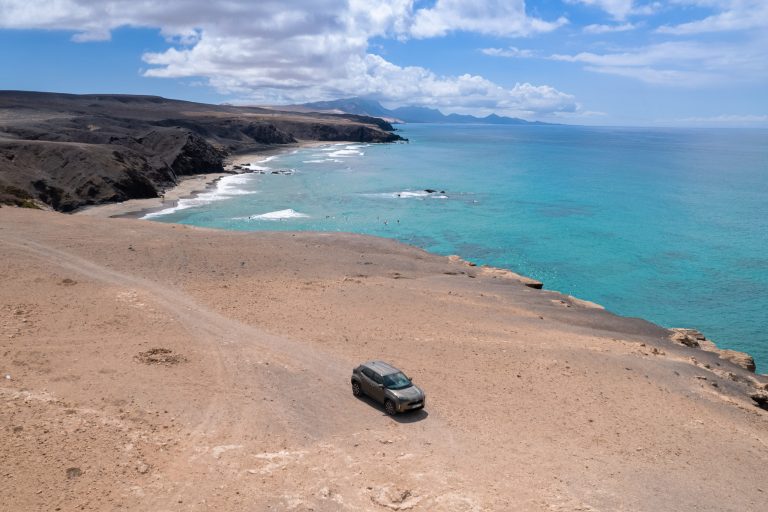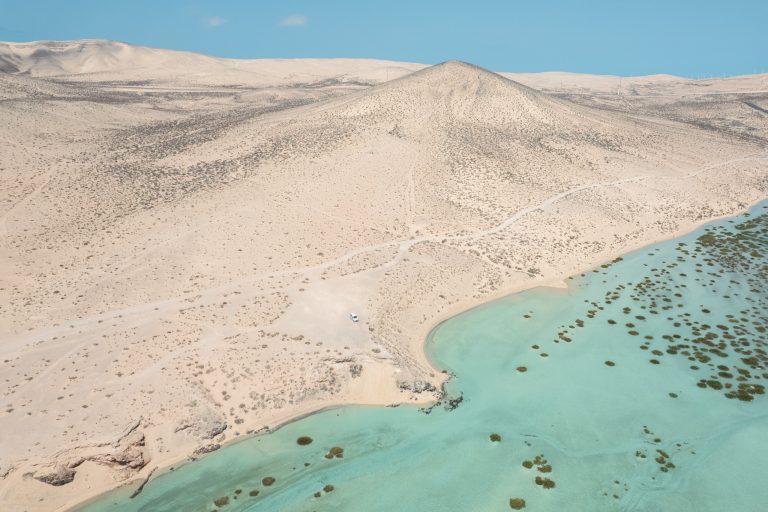For nature lovers
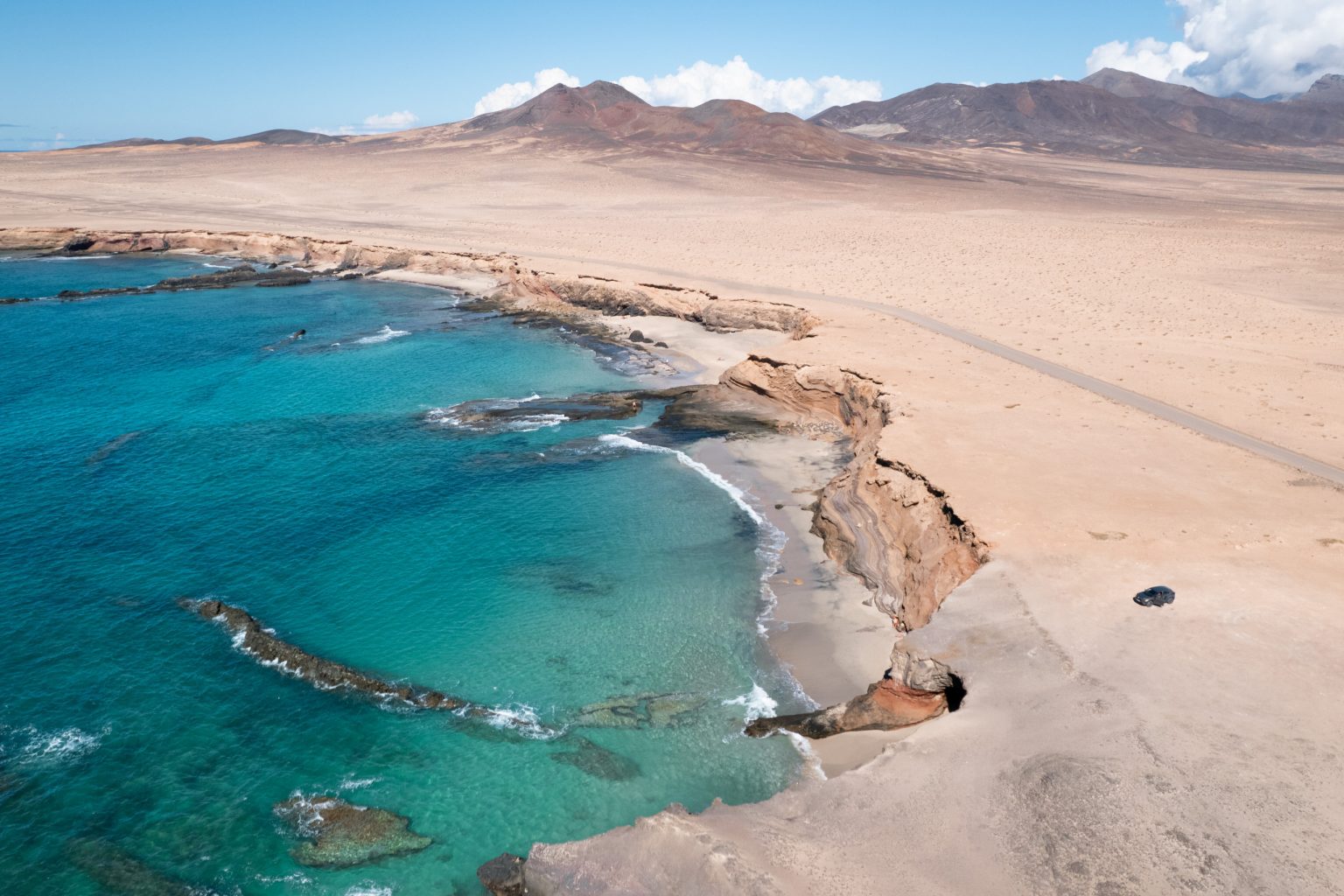
This excursion is ideal for lovers of nature and virgin landscapes. During 80 kilometers of dirt track it runs through a large part of the most important mountain system of Fuerteventura, Jandía.
It offers the possibility of discovering the great U-shaped valleys on the south face of the massif, with smooth and harmonious contours. In clear contrast, the north face presents an abrupt geography, with impressive cliffs that make up the Cofete arch, one of the most impressive landscapes in the Canary Islands.
The vegetation has its maximum expression in these mountains with unique species in the world, such as the Jandía cardón (Euphorbia handiensis), the Jandía margarza (Argyranthemum winteri), or the Jandía tajinaste (Echium handiense).
It also offers the opportunity to swim in isolated beaches with crystal clear waters where tranquility is the best ally for a magnificent day.
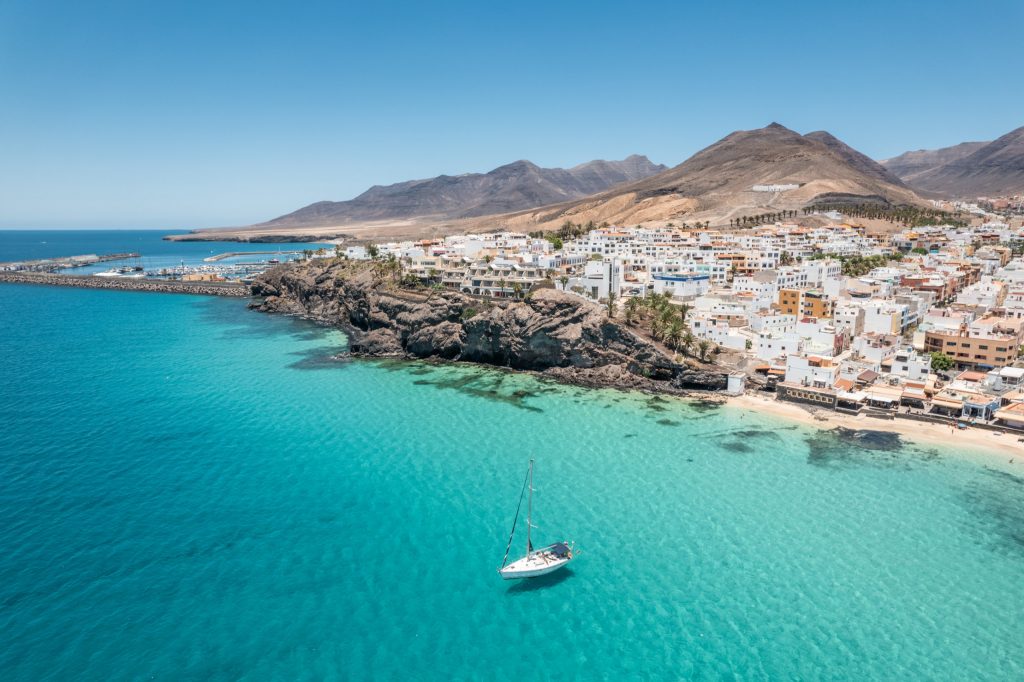
Morro Jable
Important fishing village with more than 5,000 inhabitants located on the southern slopes of the Macizo de Jandía. It has a port with a dock that fulfills functions of protecting the fishing fleet and a strategic point of maritime communications between the island and Gran Canaria. In its different restaurants you can savor the exquisite fresh fish of the area.
Next to the town of Morro Jable is the urbanization of Solana Matorral. The excellent climatic conditions and the seduction of its beaches have encouraged the formation of one of the most important tourist complexes in Fuerteventura.
A wide variety of sports can be practiced on its shores: diving, catamaran, horse riding, tennis, boat trips and, above all, the king sport of this area, windsurfing.
A wide variety of restaurants and bars offer both typical food from the archipelago and international cuisine.
At night it presents a fun nightlife in discos and bars as well as in the different hotels where various shows are organized daily.
Juan Gomez Beach
Paradise beach 400 meters long located on the south coast of Jandía. Blonde sand bathed by gentle waves of crystal clear waters.
It is located at the mouth of the ravine of the same name and is accessed by a detour to the left, shortly before the fork of Puertito de la Cruz and Cofete.
In the immediate vicinity there is no type of infrastructure, which is why it is ideal for those seeking tranquility in a practically virgin landscape.
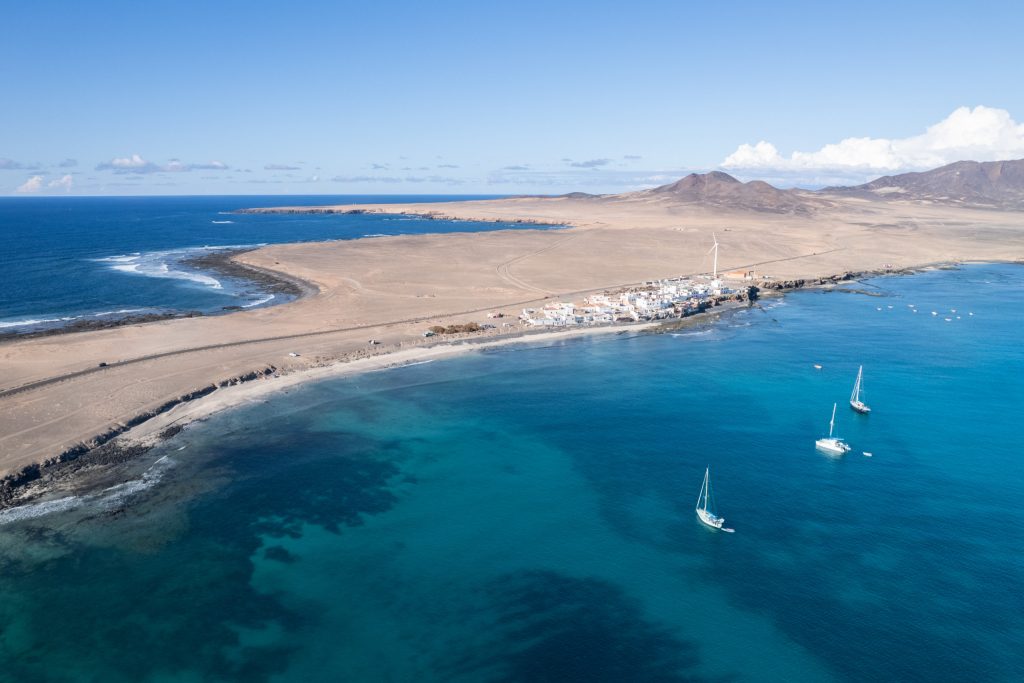
little port of the cross
A small country house that is easily distinguishable for having a large modern windmill nearby.
Formerly it was a fishing settlement, an activity that today is practically forgotten in this place. A large part of their houses act as second homes for islanders settled mainly in Morro Jable.
Jandia Lighthouse
It is located in the vicinity of Puertito de la Cruz, in the extreme southwest of the island. Formerly a lighthouse keeper was responsible for ensuring its proper functioning. Today an electronic system allows it to work automatically
The coastline where it is located is of great beauty: it joins the North Sea with the South Sea, presenting small cliff formations 10 to 15 meters high. Among the puddles that form at low tide, nature lovers can enjoy observing a wide variety of marine species, especially small invertebrates.
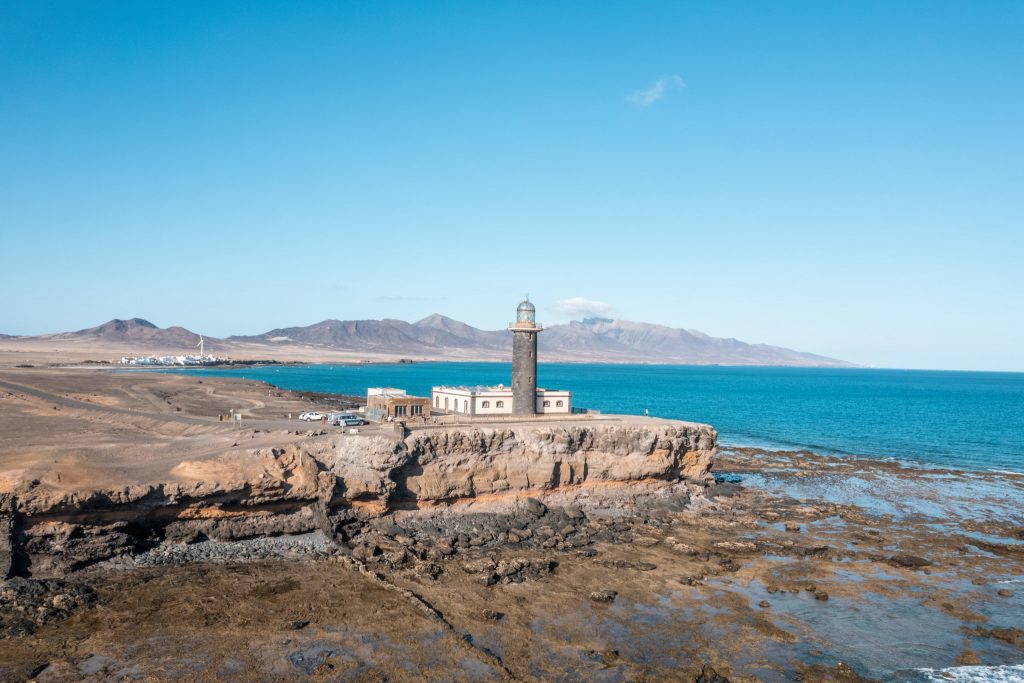
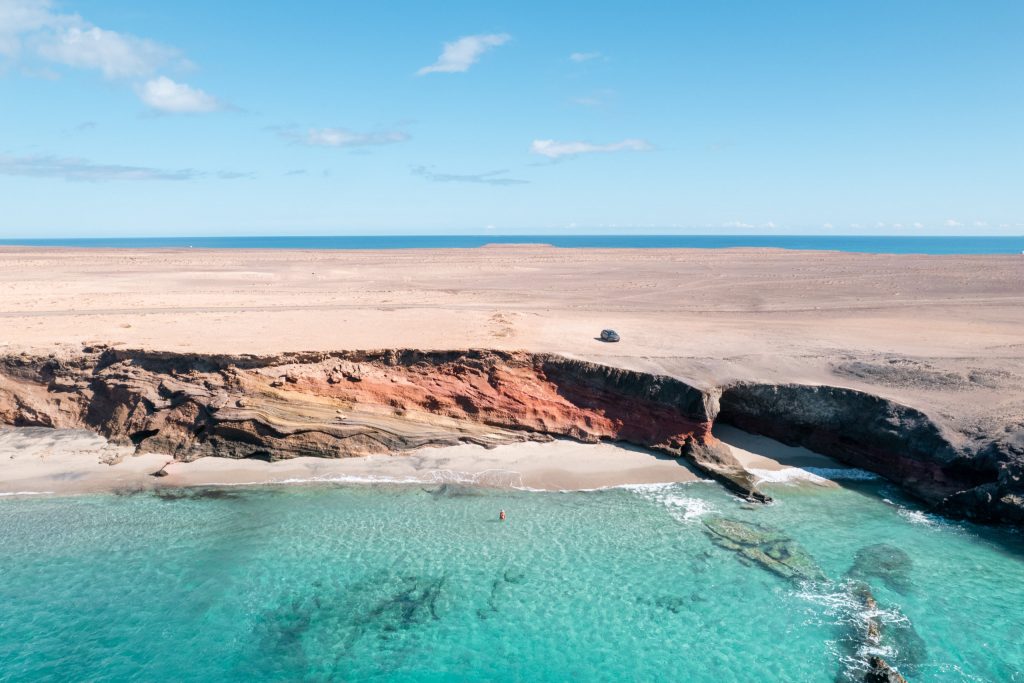
Eyes Beach
Quiet beach located on the west coast of Jandía. To access it you have to take the road that goes from Puertito de la Cruz to Punta Pesebre for two kilometers, then descend a small cliff about 10 meters high, always taking extreme precautions since the path is unsteady due to the soil erosion.
In its annexes there is no type of infrastructure, giving it a virgin and solitary character.
Manger Point
It is located on the northwestern edge of the island. It is accessed through a six-kilometre-long paved road that starts at Puertito de la Cruz.
The only construction it has is a small radio-beacon.
It has good views of the Arco de Cofete and the surrounding coastline.
Due to its great isolation, it is a good place to feel that you are at the end of the world.
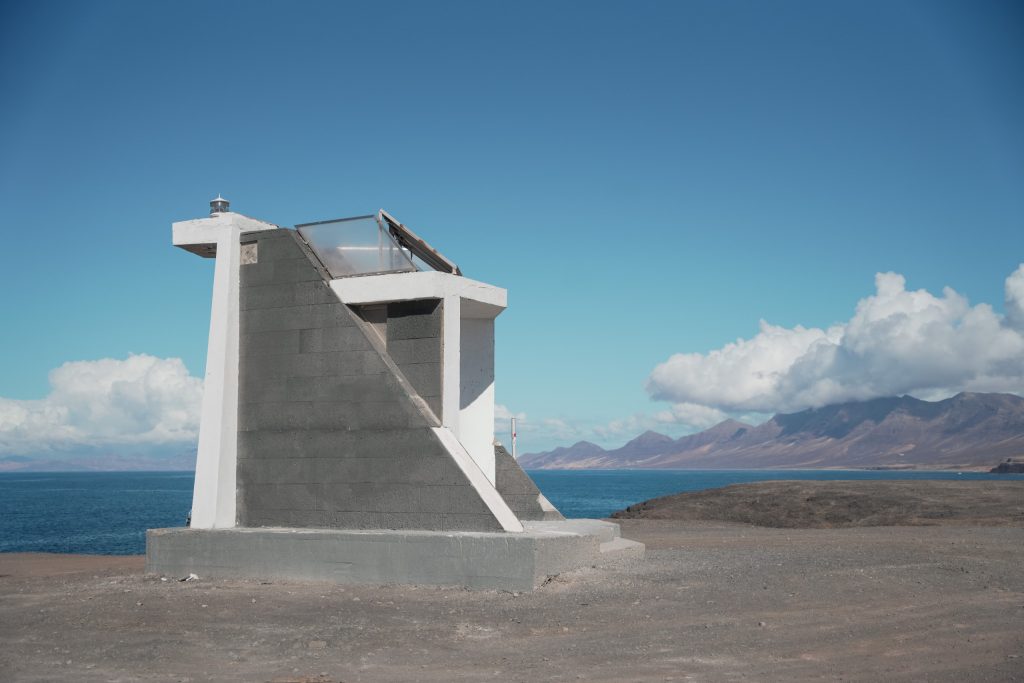
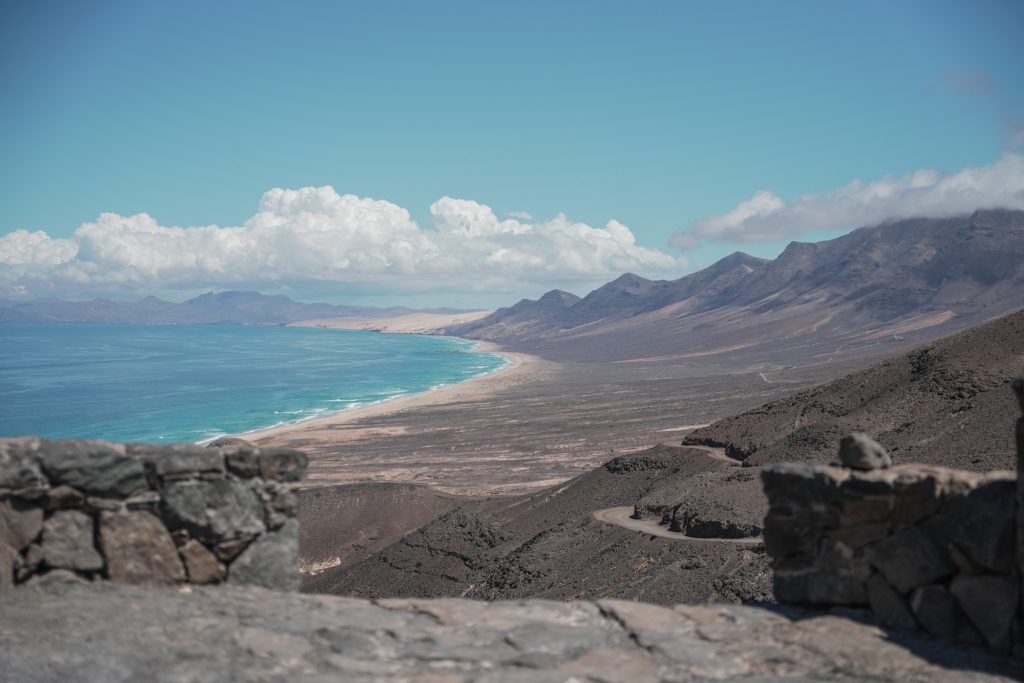
Cofete Viewpoint
It is located in the Degollada de Agua Oveja at 220 meters above sea level, right on the dividing line between the summits, when the track stops ascending and begins its descent towards the Windward coast. It is accessed after two kilometers from the fork between Puertito de la Cruz and Cofete. You can enjoy spectacular views of the Cofete arch and beach, as well as a large part of the Jandía Massif.
coffee
It consists of a spectacular stone amphitheater with a difference of almost eight hundred meters between the highest peaks and the base located on the seashore. The strong marine erosion, over millions of years, has dismantled a large part of this massif, which formerly had a considerably larger surface, today the territory of the ocean.
Beneath the impressive slopes of the cliffs, two kilometer-long beaches, Playa de Cofete and Playa de Barlovento, extend their virgin sands over a sea rich in fauna.
Among the mountains that make up the Arco de Cofete is the Pico de la Zarza, the maximum height of the island with 807 meters of altitude.
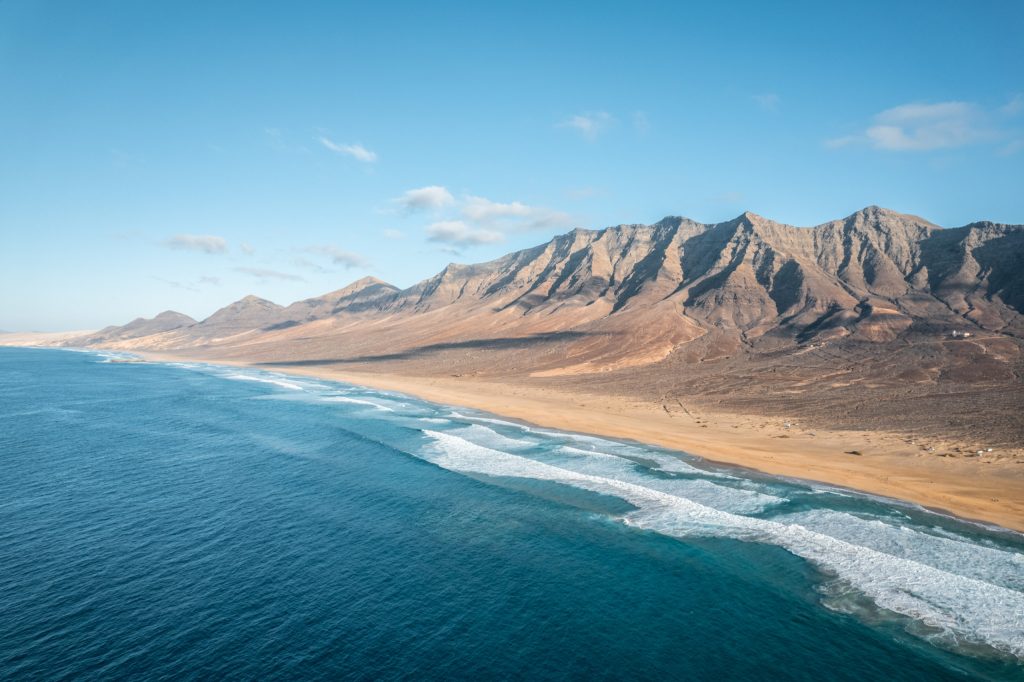
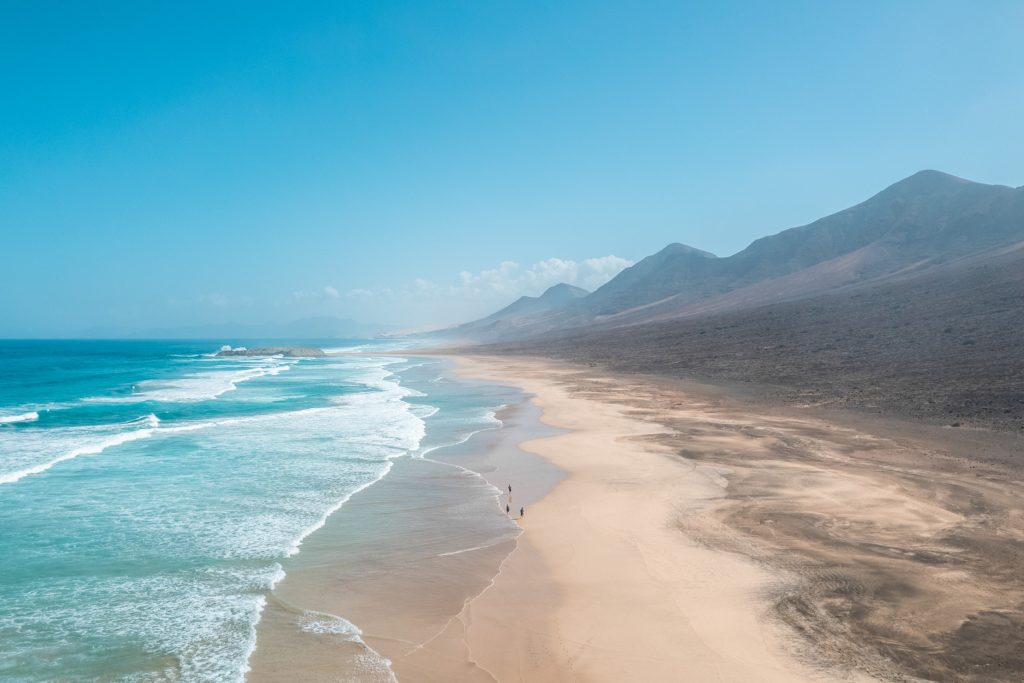
Cofete Beaches
The beaches of Cofete and Barlovento make up a set of more than 15 kilometers in length separated by El Islote, a small rock that has withstood marine erosion. It is a coastline open to the north and exposed to the trade winds, with which it presents strong winds and sea currents for much of the year that must be taken into account when bathing.
Its clear sands of organic origin from the shells of marine molluscs, accumulate around a plant species, the balancón, forming dunes of extraordinary beauty.
They do not have any type of infrastructure, except for the small hamlet of Cofete, located nearby, where you can eat.
Its isolation and virginal character is very appropriate for lovers of tranquility and relaxation.
